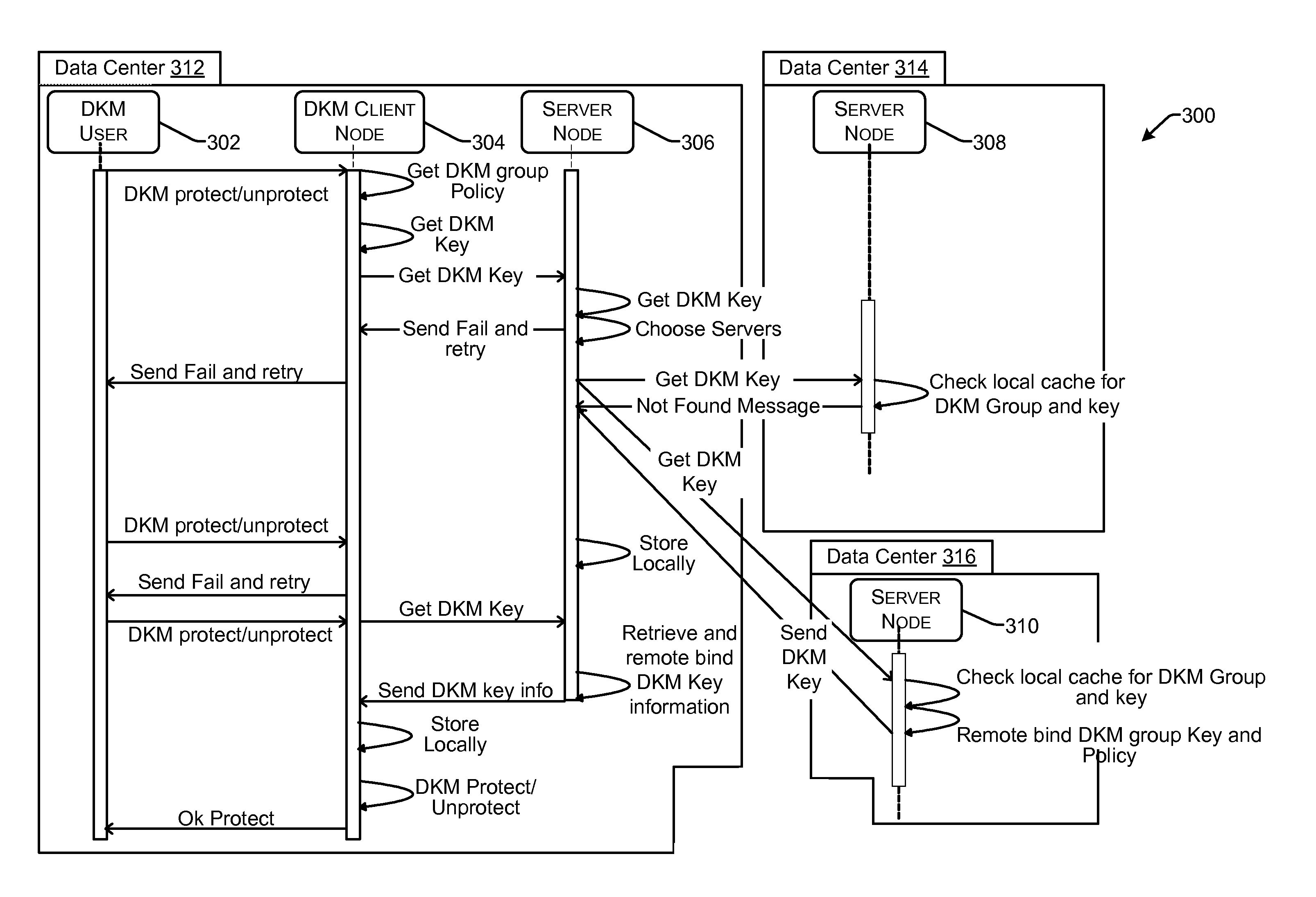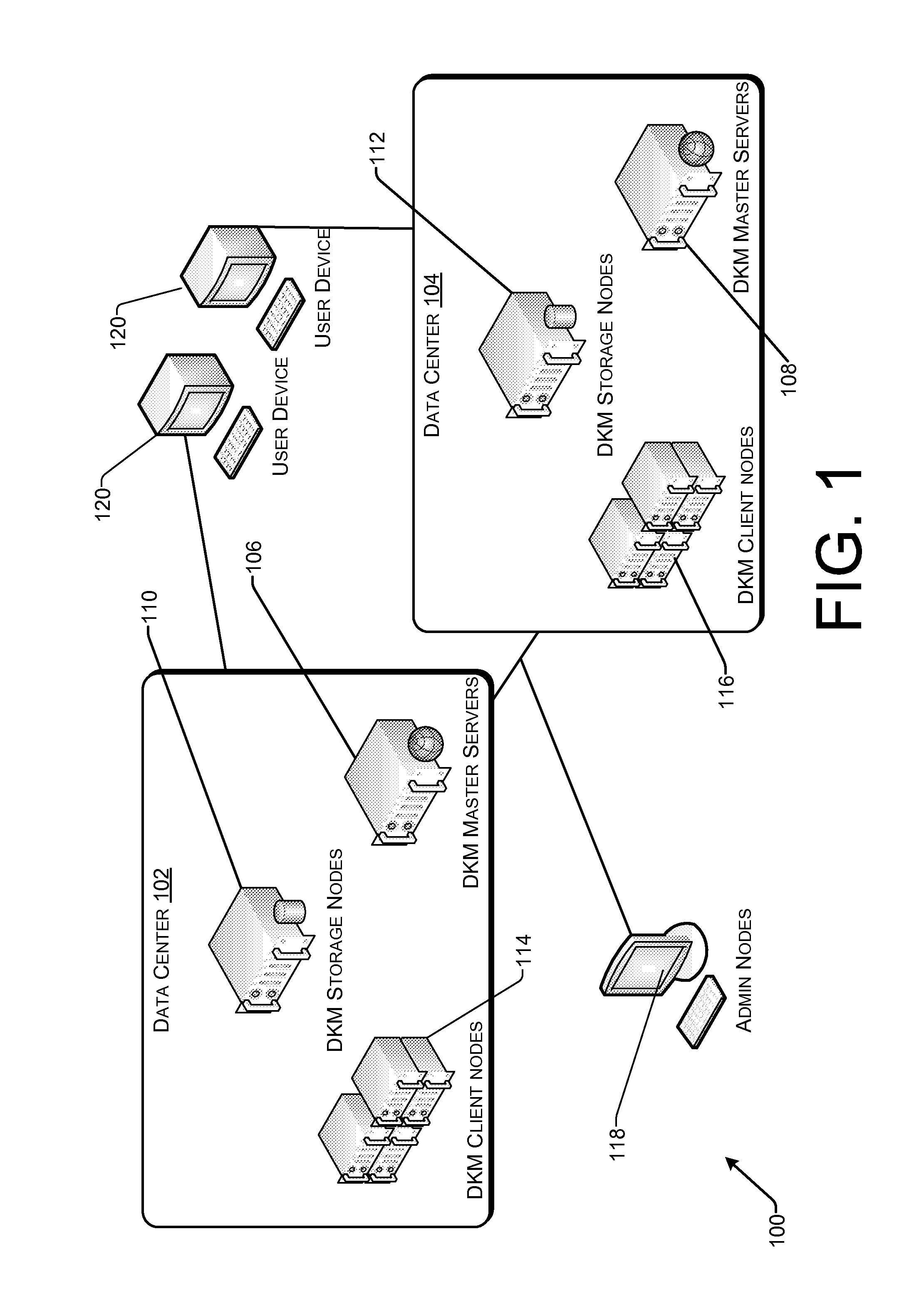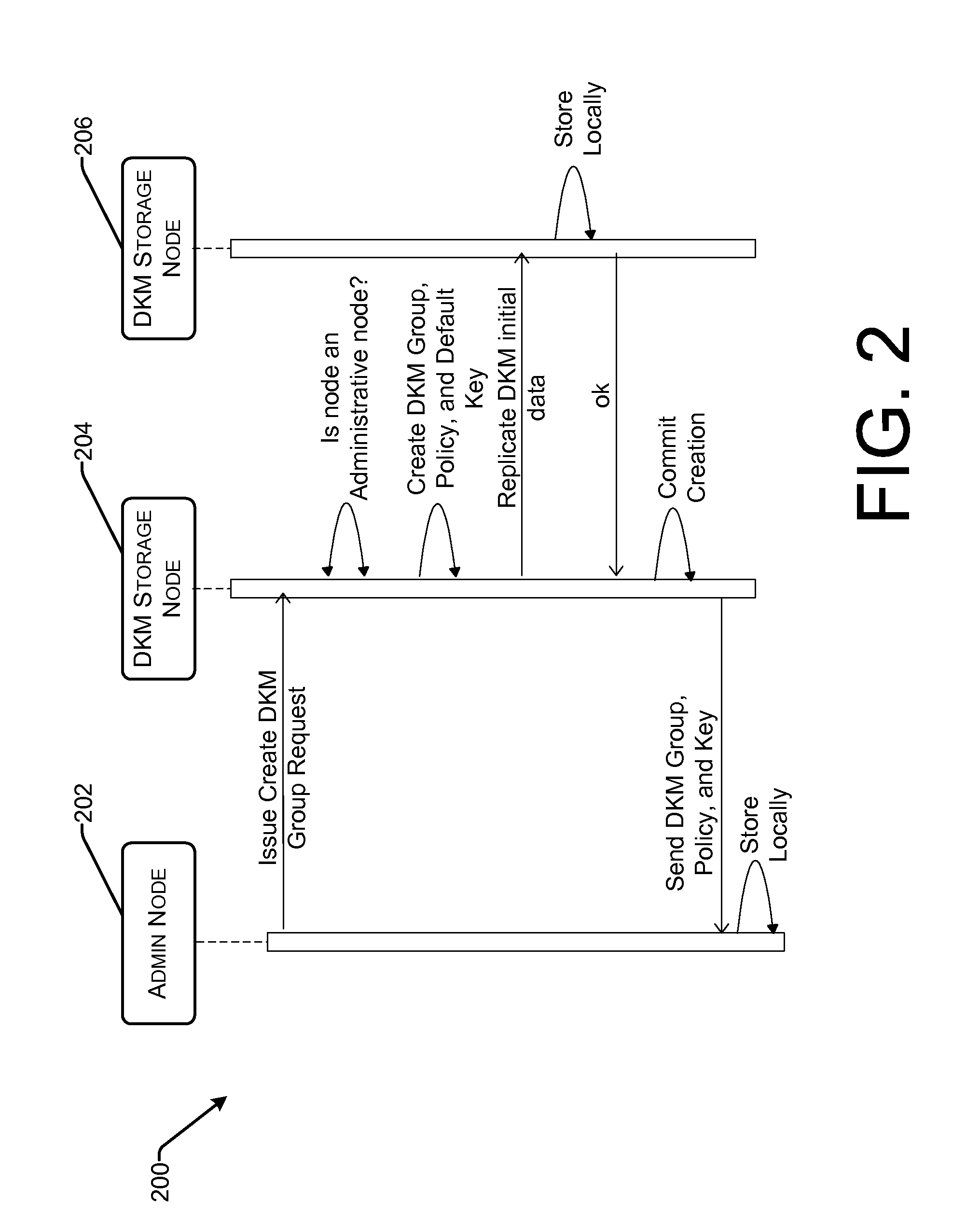Role-based distributed key management
a distributed key and key technology, applied in the field of distributed key management, can solve problems such as difficult problems in secure distribution of dkm keys
- Summary
- Abstract
- Description
- Claims
- Application Information
AI Technical Summary
Benefits of technology
Problems solved by technology
Method used
Image
Examples
example master
[0068]FIG. 9 is a block diagram of an example DKM master server 900 according to various embodiments. The DKM master server 900, which may be the same as or similar to the DKM master servers 106 and 108, includes a TPM 902 and one or more processors 904. Memory 906 includes DKM system policies 908 and DKM system configuration files 616. The memory 906 includes a signed server list 618 and a signed client list 812. A DKM master server module 910 is executable by the one or more processors 904 to perform various DKM master server functions within a DKM system.
[0069]The DKM master server module 910 performs client list updates, including receiving TPM keys of new client nodes, adding them to the list, signing the new list, and providing the updated signed client list to the other nodes in the DKM system. The DKM master server module 910 performs periodic server list updates, including requesting tokens from other master servers in the DKM system, querying the storage nodes for st...
PUM
 Login to View More
Login to View More Abstract
Description
Claims
Application Information
 Login to View More
Login to View More - R&D
- Intellectual Property
- Life Sciences
- Materials
- Tech Scout
- Unparalleled Data Quality
- Higher Quality Content
- 60% Fewer Hallucinations
Browse by: Latest US Patents, China's latest patents, Technical Efficacy Thesaurus, Application Domain, Technology Topic, Popular Technical Reports.
© 2025 PatSnap. All rights reserved.Legal|Privacy policy|Modern Slavery Act Transparency Statement|Sitemap|About US| Contact US: help@patsnap.com



